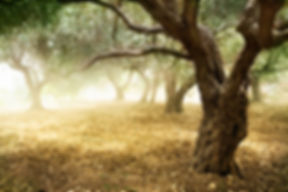Writing Space, or "A Room of One's Own"

The title of today’s blog is a quote from Virginia Woolf’s 1929 essay “A Room of One’s Own”. There, she discusses the need for women writers to have both figural and physical space to carve out their work, free from poverty and patriarchy. While the ongoing issue of women’s poverty and independence (the figural “room”) is the more important issue, today I’m musing about actual, physical writing space.
It’s the holiday season, which means that my eldest child is home from university. While I am thrilled that she is home for a few weeks, I have been ousted from my usual private writing space. For the last two years, I have used her bedroom as my office when she is away. Today, I am working at the family computer desk in our only eating area, using a cardboard box as my portable office. Just like old times.
The disruption is minor right now, while people are sleeping and I have our home mostly to myself. I did write several short stories and two books in the past, sitting here while kids and husband and meals all bustled around me (okay, the meals were mostly bustled by me). Still, as I remove the breakfast dishes, shift my husband’s computer and pile of work over, and lift a cat out of my portable office where she is rolling around in a file, my mind wanders to that venerable tradition of writer’s sheds. See some sheds of famous writers here. Or just google “writer’s sheds” to see some fabulous images from famous and not-so-famous (but clearly prosperous) writers.
One of my favourite Canadian authors of dark fantasy, Kelley Armstrong, tweeted some time ago that she had converted a shed in her back field into her writing studio (@KelleyArmstrong). I don’t have a field. We have a very small backyard to go with our very small house. But, we do have a shed – two in fact. A tiny one holds gardening tools, plus our opulent Canadian collection of snow shovels and ice choppers. The other, larger one, holds my husband. It is his refuge from the crowd here. He built it and he has dibs.
I don’t think our yard can manage a third shed.
I know I’m fortunate to have desk at all, and a family, and children old enough to sleep late. I will gladly make do, like so many writers at this time of year, by carving out time in the wee small hours, and take the rest of the holiday noise and celebration for the joy it brings. But I do miss the quiet, freedom, and privacy of that room. And so, I’d like to close with a hilarious video ode to sheds by a group of punk musicians, Punks Not Dad. While they are praising man-sheds, I think the sentiments apply to writing sheds as well. Enjoy here!
Wishing you and yours a Marvelous Holiday Season, and – in one way or another, even if it is only inside your skull – a (writing) room of your own.
MENACING ENTITY OF THE MONTH: YEW

European Yew: Don’t let this Solstice Season favourite fool you. Yes, it’s pretty. And yes, its wood is renowned for its strength, flexibility, and lustre. But all parts of the plant are toxic except the berries – although the seeds inside the berries are poisonous, too. Good luck, then, jelly makers. Animals, with the exception of some birds, also succumb to the same rapid, horrid death as humans, should they eat it. On very hot days, the yew can emit toxic gas which can sometimes lead to hallucinations, perhaps partially explaining its historic role in pagan religions. These trees can live 400-600 years, which is eerily spooky. The Canadian Yew, while also poisonous, is somewhat less toxic, because we’re just that nice. Indigenous peoples sometimes used yew tea for rheumatism, but they used it very, very carefully. Don’t try this at home, kids. And – yes, I can’t resist it – Happy Holidays to Yew!




















